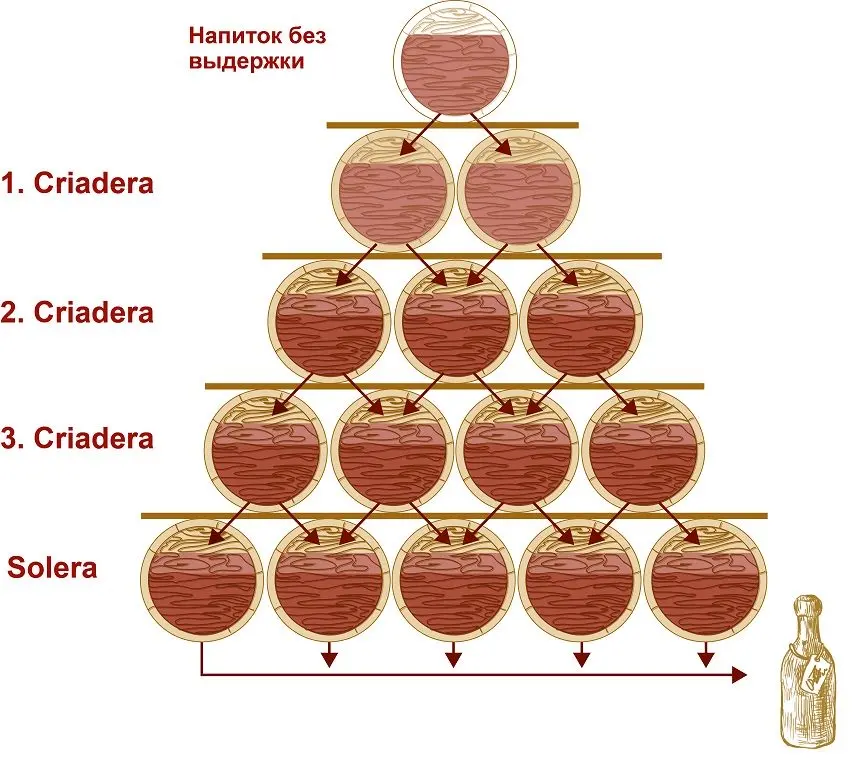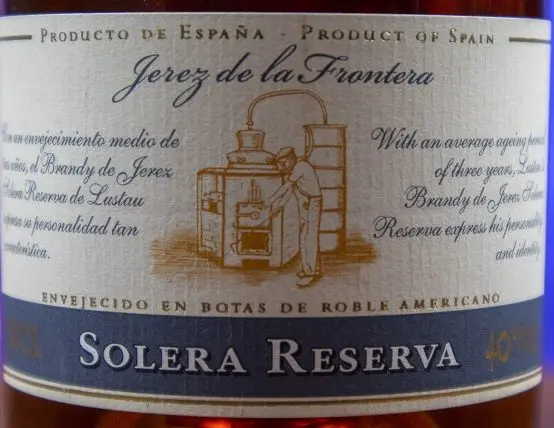The Solera system is used for aging spirits (mainly sherry brandy and rum), wine and beer. This is a complex scheme, as a result of which a blend of “unequal-aged” spirits is obtained, and the manufacturer can guarantee that the drink meets a certain level of quality, even if some year was lean.
Endurance principle. A multi-tiered pyramid is built from barrels, in the bottom row from the floor – solera (from the Spanish “on the ground”) contains the most seasoned liquid. In the criadere (“cradle”) standing on top, younger alcohol is poured, the level above is even younger, and, finally, in the last tier (and there can be from 3 to 15) there is a drink with minimal exposure or even immediately after distillation.
For bottling, wine or brandy from solera is used, and the vacant place is immediately filled with alcohol from the next floor. There, in turn, an empty space is formed, into which alcohol is poured from the upper tier, and so on until the end. Young wine (beer or brandy) is poured into the last criadera. Of course, the barrels are not necessarily located in a turret (this is done to save space), but can lie side by side. Just the appropriate numbering is enough so that winemakers do not get confused about what to get from where.

The Solera and Criadera system is used to age such drinks as: Sherry, Madera, Lille (French flavored wine) and Port, Marsala, Mavrodafni, Muscat, Commandaria and other fortified wines, as well as sherry brandy, beer, rum and whiskey. This method is especially popular in Spain and Portugal.
Nuances of technology
The removal of portions (and, accordingly, the addition of new, young ones) occurs at regular intervals – usually once a year, with a new crop, but maybe more often. The barrel is emptied by a maximum of a third (usually by 10-15%), so that even after 50-100 cycles, a piece of the very first batch still remains in the solera. Modern winemakers accurately calculate the percentage of all portions with special computer programs.

Strictly speaking, it is not required to indicate the age of the drink on the label, however, many manufacturers do this for marketing purposes. Most often they write the year the solera was founded, but they can also calculate the average age of the blend. If the drink is aged according to the Solera system, then the label “Solera” will definitely be on the label.
Types of brandy solera aging
Grape spirits aged according to this system are divided into three types:
- Solera (6-12 months of aging);
- Solera Reserva (1-3 years);
- Solera Gran Reserva (more than 3 years).
There is no such classification for other drinks.

Advantages and disadvantages of the system
Pros of Solera and Criadera:
- Young wine “refreshes” the blend, while old wine “ennobles” it. Regardless of the characteristics of the harvest of a particular year, the final drink always turns out to be of high quality.
- Constant mixing activates oxidative processes in wine, accelerates maturation. Accordingly, the required organoleptic characteristics are achieved faster, and the cost of the product almost does not increase.
- By selecting different barrels (old or new, oak or stainless steel, etc.), you can pre-set the required parameters of the finished drink, influence the taste and aroma.
- The Solera and Criadera system enables winemakers to carry out biological aging of sherry (under flor), because without regular infusions of new portions of the drink, the yeast does not receive the necessary nutrients and dies.
Disadvantage: solera begins to pay for itself in at least 5-10 years. It takes much longer to make a truly exclusive drink. The maintenance of barrels and premises with a suitable microclimate requires constant expenses, and income does not come immediately. It turns out a serious investment, which can really pay off only from the heirs of the winemaker. For consumers, this means that the price of spirits made according to the Solera is often higher than for similar ones made with ordinary aging in oak barrels.










